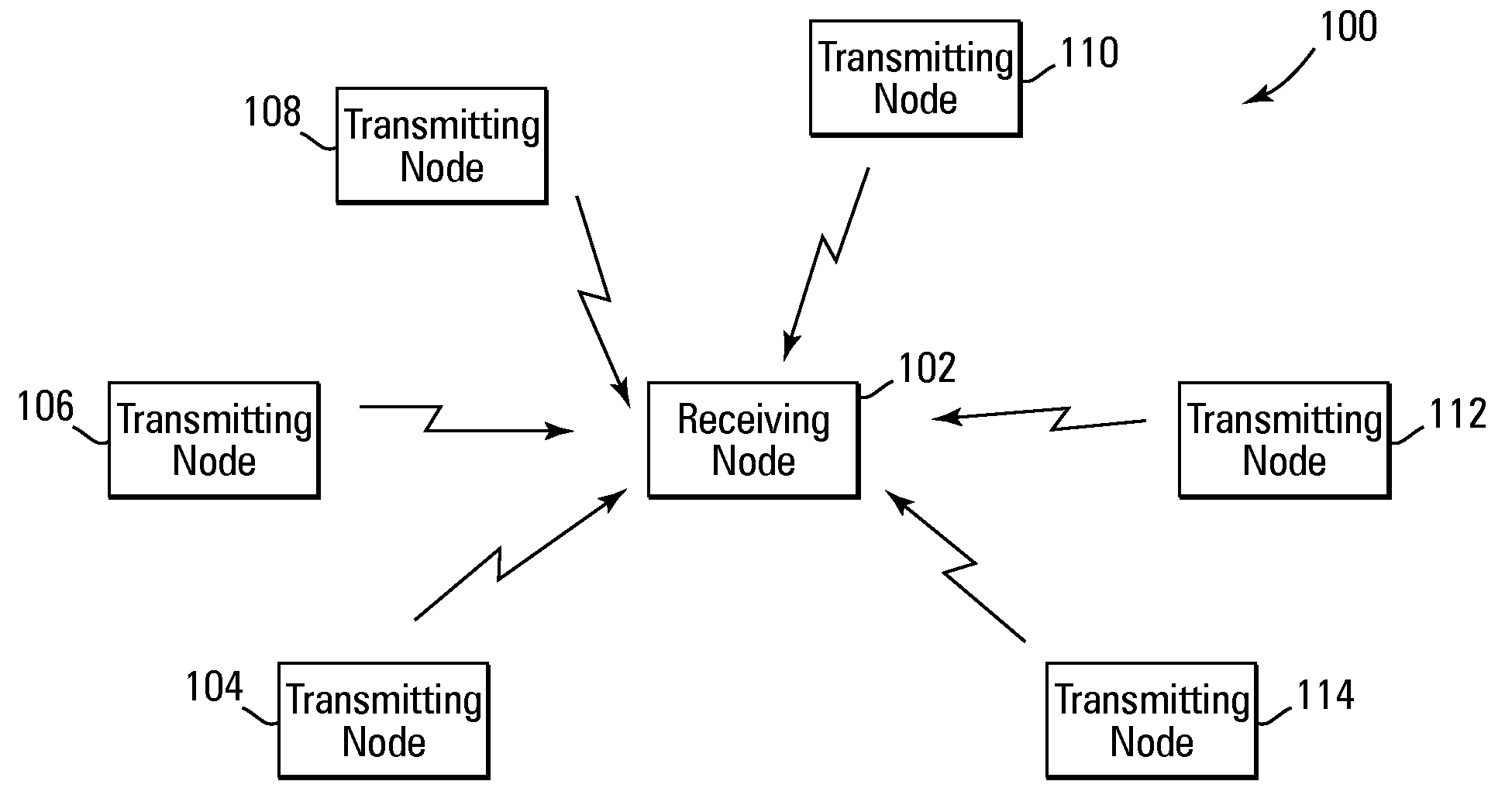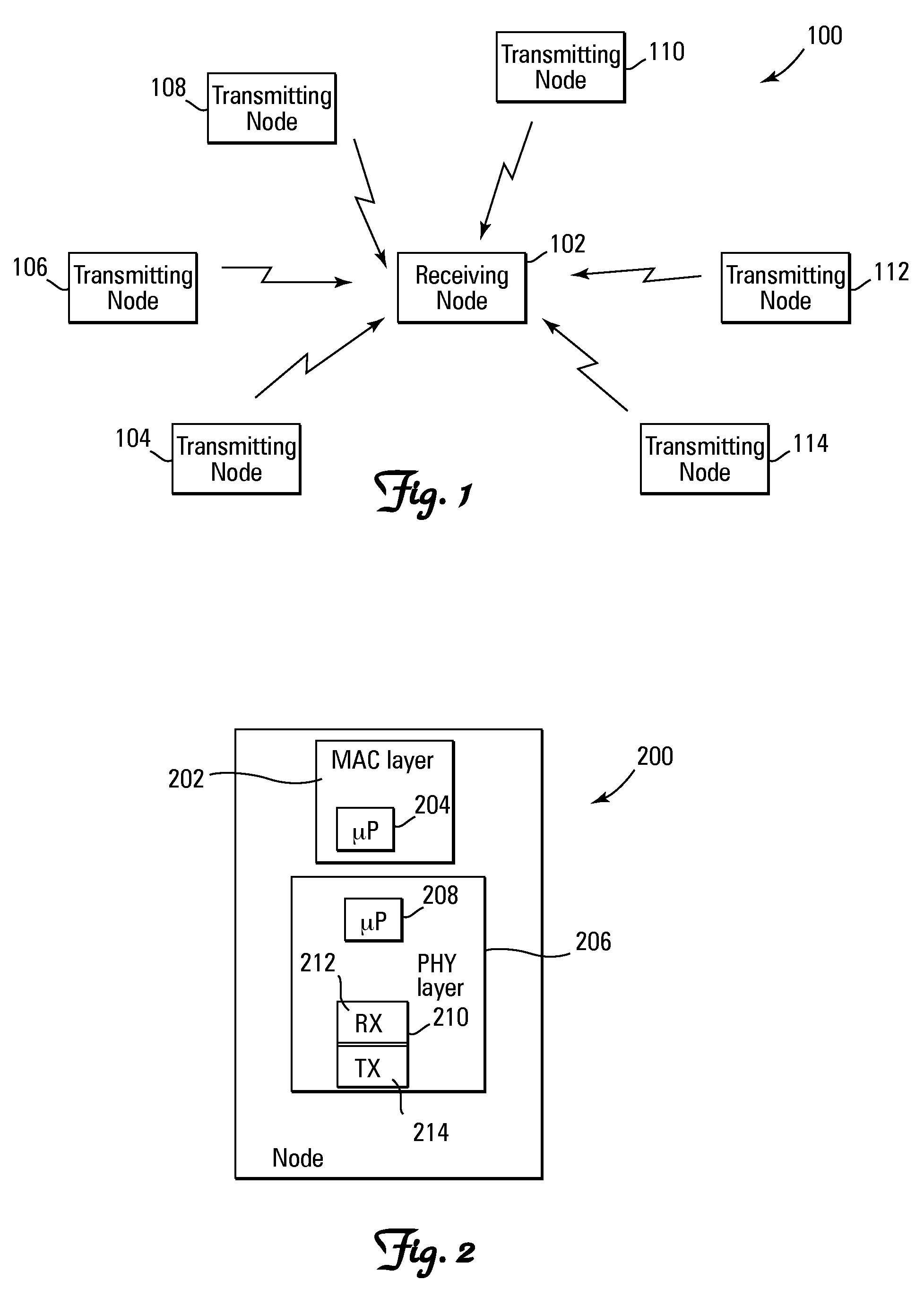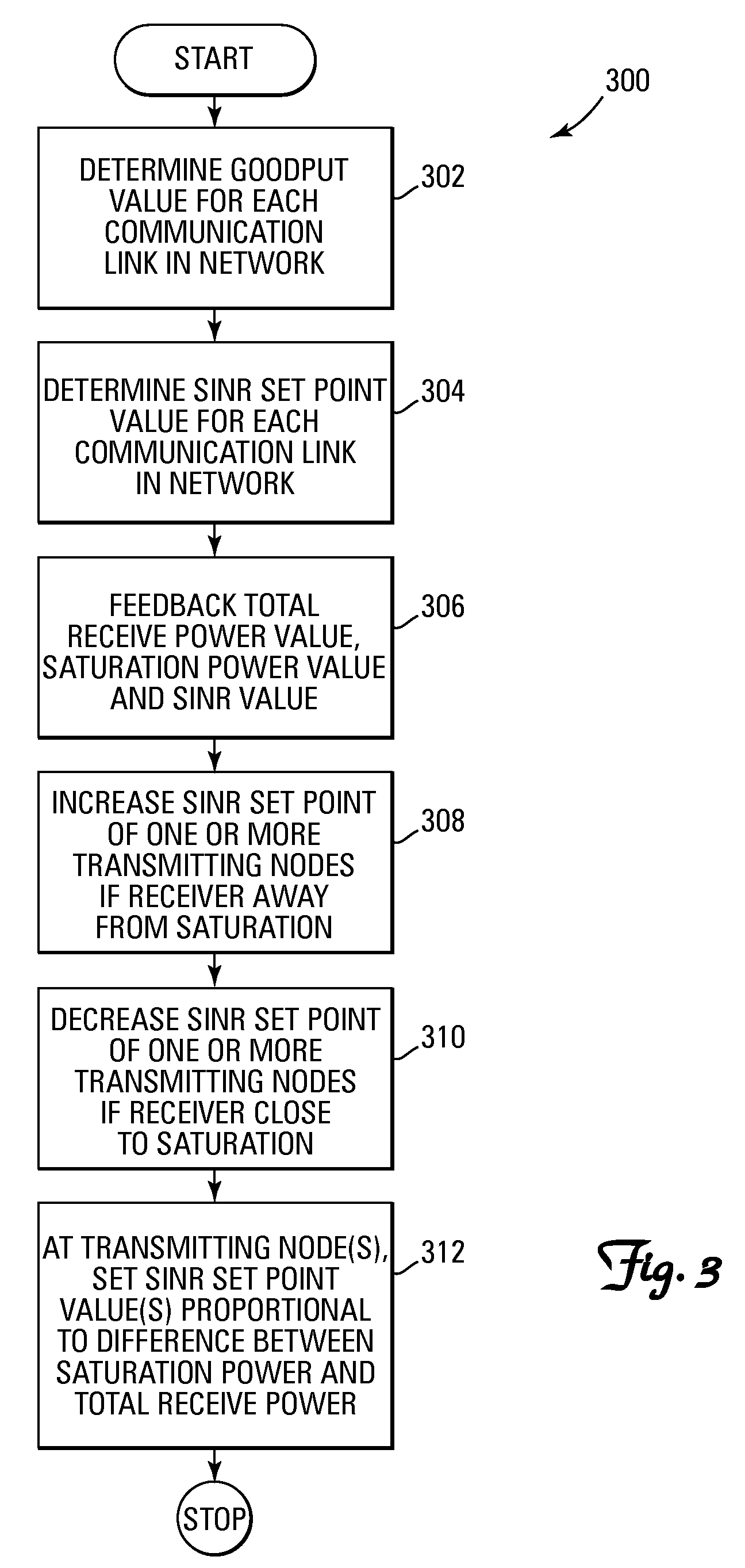Method and system for performing distributed outer loop power control in wireless communication networks
a wireless communication network and distributed outer loop technology, applied in power management, electrical equipment, radio transmission, etc., can solve the problems of low sinr limit of maximum data rate, no systematic technique currently available, etc., and achieve the effect of increasing sinr
- Summary
- Abstract
- Description
- Claims
- Application Information
AI Technical Summary
Benefits of technology
Problems solved by technology
Method used
Image
Examples
Embodiment Construction
)
[0015]The present invention provides a method and system for performing distributed outer loop power control in wireless communication networks. Essentially, the present invention provides a distributed outer loop power control technique that resolves problems related primarily, but not exclusively, to receive signal saturation. For example, in certain wireless networks, each radio transceiver has a certain received signal level at which its front end (e.g., antennas, filters, etc.) becomes saturated. Consequently, it would be advantageous to impose a constraint on the existing wireless network power control techniques in order to avoid this saturation level. In this regard, the present invention provides a method and system for performing distributed outer loop power control that can be used to reduce frame error set points or SINR set points in a wireless communication network if there is an increase in the overall level of the signals received at a receiver, and / or uniformly or ...
PUM
 Login to View More
Login to View More Abstract
Description
Claims
Application Information
 Login to View More
Login to View More - R&D
- Intellectual Property
- Life Sciences
- Materials
- Tech Scout
- Unparalleled Data Quality
- Higher Quality Content
- 60% Fewer Hallucinations
Browse by: Latest US Patents, China's latest patents, Technical Efficacy Thesaurus, Application Domain, Technology Topic, Popular Technical Reports.
© 2025 PatSnap. All rights reserved.Legal|Privacy policy|Modern Slavery Act Transparency Statement|Sitemap|About US| Contact US: help@patsnap.com



